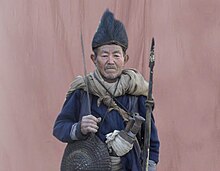Kathmandu, the capital and largest city of Nepal, is a vibrant metropolis nestled in the heart of the Kathmandu Valley. With a rich history spanning over two millennia, Kathmandu is not only a bustling urban center but also a cultural and historical hub that attracts visitors from around the world.
Historical Significance: Kathmandu’s history dates back to ancient times, with evidence of human settlements in the valley as early as the 2nd millennium BCE. Over the centuries, Kathmandu served as the seat of various dynasties, including the Kirats, Lichhavis, Mallas, and Shahs, each leaving their mark on the city’s architecture, culture, and traditions.
Cultural Heritage: The city is renowned for its architectural marvels, including ancient temples, palaces, and stupas that reflect Nepal’s rich religious and cultural heritage. Durbar Square, a UNESCO World Heritage Site, is home to several historic palaces, temples, and courtyards, showcasing the intricate woodcarvings and craftsmanship of the Malla period.
Spiritual Center: Kathmandu is a melting pot of Hinduism and Buddhism, with numerous sacred sites and shrines scattered throughout the city. The iconic Pashupatinath Temple, revered as one of the holiest Hindu temples in the world, attracts thousands of pilgrims and devotees each year. Similarly, the Buddhist stupas of Swayambhunath and Boudhanath are revered as sacred sites and offer serene retreats for meditation and contemplation.
Cultural Diversity: Kathmandu’s diverse population reflects Nepal’s multicultural ethos, with people from various ethnicities, languages, and backgrounds coexisting harmoniously. The city’s bustling streets are alive with the sights and sounds of daily life, from colorful markets and street vendors to traditional music and dance performances.
Modern Development: In recent years, Kathmandu has experienced rapid urbanization and modernization, with the emergence of new infrastructure, commercial centers, and transportation networks. Despite these changes, the city retains its unique charm and allure, seamlessly blending ancient traditions with contemporary lifestyles.
Challenges and Opportunities: Like many growing cities, Kathmandu faces challenges such as traffic congestion, pollution, and urban sprawl. However, efforts are underway to address these issues and promote sustainable development initiatives. With its rich cultural heritage, dynamic atmosphere, and warm hospitality, Kathmandu continues to captivate visitors and residents alike, offering a glimpse into the timeless allure of Nepal’s capital city.


